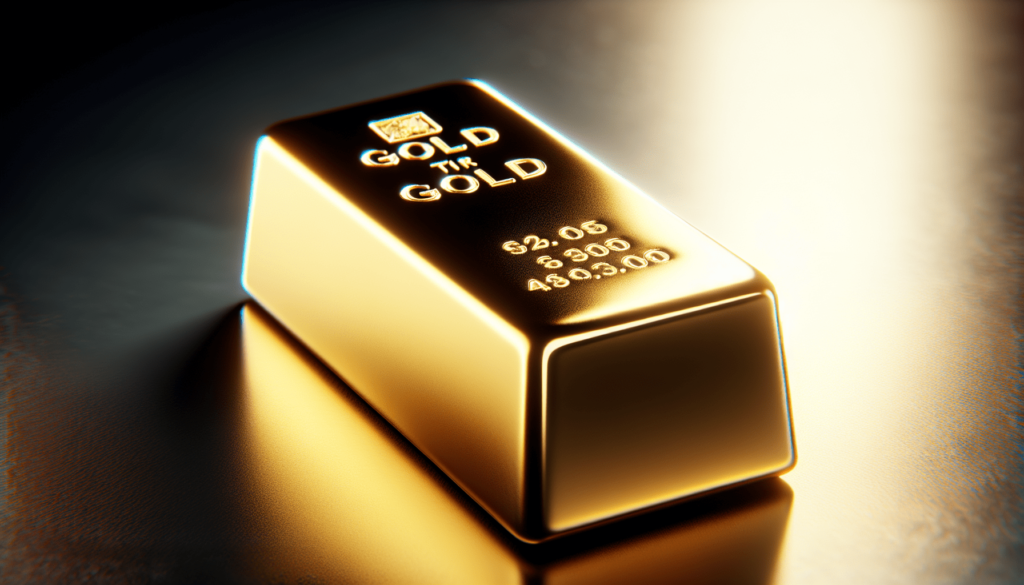Welcome to an insightful look at the economics of gold in a post-pandemic world. As the global economy continues to recover from the impact of the pandemic, the role of gold as a safe haven asset and a hedge against inflation is becoming increasingly important. In this article, we will explore the factors driving the price of gold, its historical performance during times of crisis, and its potential outlook in the new economic landscape. So sit back, relax, and let’s delve into the fascinating world of gold economics together.
The Economics Of Gold In A Post-pandemic World
Have you ever wondered about the role of gold in the global economy, especially in the wake of the pandemic? Let’s take a closer look at the economics of gold and how it is shaping up in a post-pandemic world.

Understanding the Basics of Gold
Gold has been treasured by civilizations for thousands of years, valued for its beauty, durability, and rarity. But beyond its aesthetic appeal, gold has also played a crucial role in shaping economies around the world. As a precious metal, gold is known for its intrinsic value and its ability to serve as a store of wealth.
The Role of Gold in the Global Economy
In the world of finance, gold serves multiple purposes. It is often used as a hedge against inflation, currency depreciation, and geopolitical uncertainty. Central banks and governments hold gold reserves as a way to diversify their assets and protect against economic crises. Additionally, gold is also used in the production of jewelry, electronics, and other industrial applications, further enhancing its demand.

Gold Prices And Market Trends
Gold prices are influenced by a variety of factors, including supply and demand dynamics, interest rates, inflation expectations, geopolitical events, and market sentiment. During times of economic uncertainty or market volatility, gold tends to be seen as a safe haven asset, leading to an increase in demand and prices. Conversely, when the economy is robust and stocks are performing well, gold prices may experience downward pressure.
The Impact of the Pandemic on Gold
The COVID-19 pandemic has significantly impacted the global economy, leading to unprecedented levels of uncertainty and market volatility. In times of crisis, investors often turn to gold as a safe haven asset, driving up prices and demand. The pandemic has underscored the importance of gold as a reliable store of value and a safe investment option.
Gold Demand And Supply
The demand for gold comes from various sources, including investors, jewelry manufacturers, central banks, and industrial users. On the supply side, gold is primarily mined from the ground and refined into bars and coins for use in various sectors. The balance between demand and supply plays a crucial role in determining gold prices and market trends.
Investment Demand
Investors play a key role in driving demand for gold. During times of economic uncertainty, investors often flock to gold as a safe haven asset to protect their wealth and hedge against market risks. Gold is also considered a viable investment option due to its historical performance and low correlation with other asset classes.
Jewelry Demand
Jewelry has been one of the largest sources of demand for gold, with consumers around the world valuing gold for its beauty and cultural significance. Despite the rise of alternative materials, such as platinum and silver, gold remains a preferred choice for jewelry due to its luster and durability. The demand for gold in jewelry is influenced by factors such as income levels, fashion trends, and cultural traditions.
Central Bank Demand
Central banks hold significant gold reserves as part of their foreign exchange reserves. Gold serves as a store of value and a form of insurance for central banks, providing stability and diversification to their portfolios. Central banks may increase or decrease their gold holdings in response to economic conditions, currency fluctuations, and geopolitical risks.
Industrial Demand
Gold is a valuable metal in industries such as electronics, dentistry, and aerospace, due to its excellent conductivity, corrosion resistance, and malleability. The industrial demand for gold is driven by technological advancements, consumer electronics, and the aerospace sector. Despite the prevalence of recycling and substitution, gold remains an essential material in various industrial applications.
Supply Chain Challenges
The global supply chain for gold faces numerous challenges, including environmental concerns, labor issues, and regulatory compliance. Gold mining operations often involve complex processes that can impact local communities and ecosystems. Responsible sourcing and sustainable practices have become increasingly important in the gold industry, with stakeholders advocating for ethical production and transparency in the supply chain.
The Future Outlook for Gold
As we navigate through a post-pandemic world, the role of gold in the global economy remains as relevant as ever. The economic recovery, inflationary pressures, and geopolitical tensions will continue to influence gold prices and market trends. Investors, central banks, and consumers will need to closely monitor developments in the gold market and adapt their strategies accordingly.
In conclusion, gold remains a versatile and valuable asset with enduring appeal in the modern economy. Its unique properties, historical significance, and intrinsic value make it a sought-after commodity for investors, consumers, and central banks alike. By understanding the economics of gold and its role in the global economy, you can make informed decisions and navigate the ever-changing financial landscape with confidence.

